US airlines slam FAA over air traffic control staffing shortages which have led to cancelled and delayed flights during record-setting travel season
U.S. airlines are expressing growing frustration over the Federal Aviation Administration’s shortage of air traffic control (ATC) personnel, which has crimped flights and forced regulators to extend waivers to minimum flight requirements.
“In the short to medium term, we need to reduce the number of flights at highly impacted airports as the system cannot handle the current number of flights,” Robin Hayes, CEO of JetBlue Airways, told Reuters on Tuesday on the sidelines of an industry conference. “We are selling flights that we know we cannot operate due to ATC issues.”
Airlines have faced flight problems after a record US summer season and voluntary suspensions of flights due to air traffic shortages. They want to add more flights to meet demand.
United Airlines CEO Scott Kirby, who sharply criticized the FAA this summer, said at the conference that air traffic staffing woes were “two decades in the making and will take years to address.”
The FAA declined to comment on a statement it issued in August saying it had met its goal of hiring 1,500 controllers in the year ended September 30, but that is still about 3,000 controllers behind staffing targets .
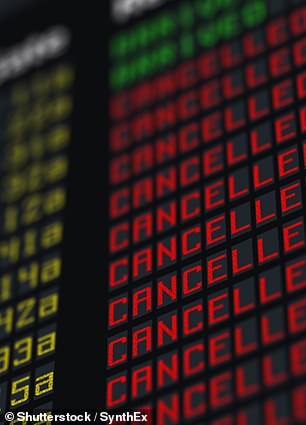
Industry workers blame air traffic control problems for the increase in aircraft incidents and delays

A Southwest Airlines plane nearly hit a Delta Airlines 737 at Louis Armstrong New Orleans International Airport
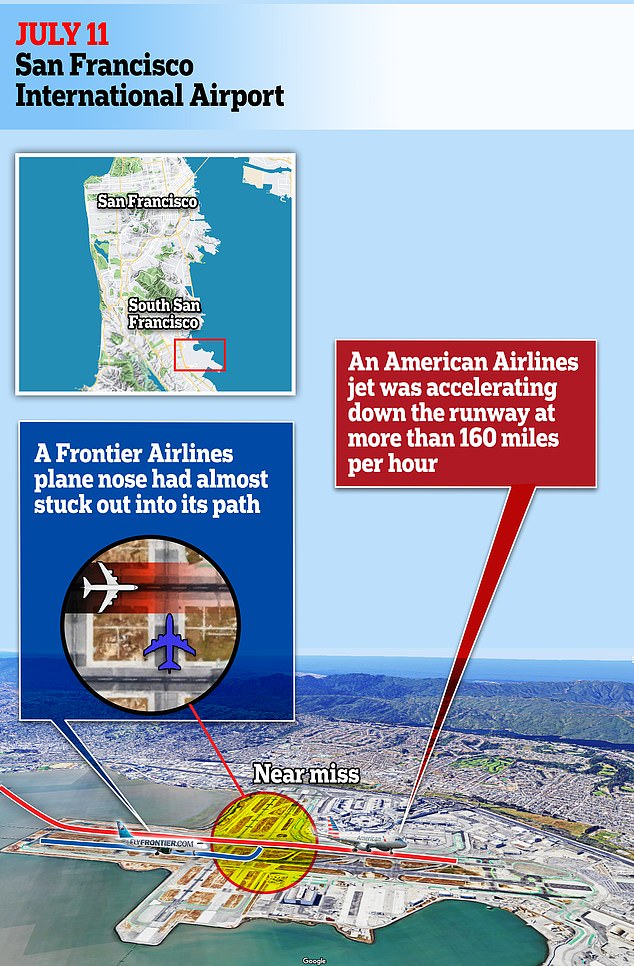
In San Francisco, two planes taking off almost crashed into a Frontier Airlines waiting to cross a runway
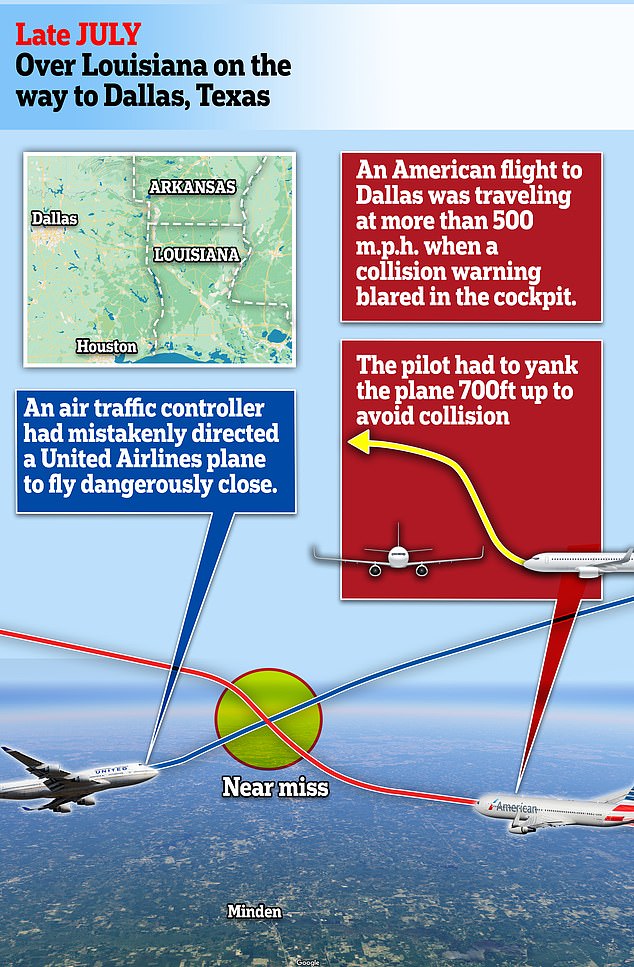
A near miss between an American flight and a United Airlines plane caused the American pilot to fly the plane 700 feet into the air
The United States has experienced several aviation near misses this year, including some that could have been catastrophic and involved apparent air traffic controller errors.
According to the FAA, commercial airlines recorded 46 close calls between aircraft in July.
Some of the near misses include one on July 2, when a Southwest Airlines flight landing at Louis Armstrong New Orleans International Airport was seconds away from hitting a Delta plane preparing to take off from the same runway.
In San Francisco, two planes taking off almost crashed into a Frontier Airlines plane that had just landed and was waiting to cross the runway.
Another incident near Minden, Louisiana between an American Airlines plane and United Airlines caused the American pilot, flying at more than 500 mph (800 km/h), to pull the plane up 700 feet (220 meters) to avoid a collision.
Hayes said that if the FAA were to double its hiring of controllers — which isn’t possible — “it would still take us five years to catch up.”
The FAA has approximately 2,600 air traffic controllers in training. The Department of Transportation is asking for $117 million to hire another 1,800 people next year.
Data shows that the number of flight delays has reached a ten-year high. It showed that 21.4 percent of flights were delayed an average of 50 minutes, with JetBlue Airways being the biggest offender.
The 4th of July weekend saw some of the worst flight delays and cancellations and broke a travel record.
On Monday, July 3, more than 4,750 flights across the country were delayed and 974 flights were canceled.
The Transportation Security Administration announced that a new record was set for the number of people screened at airports that weekend. On June 30, 2.9 million people passed through airport security.
In January, passengers faced more than 10,000 delays and more than 1,000 cancellations after an FAA system crashed.
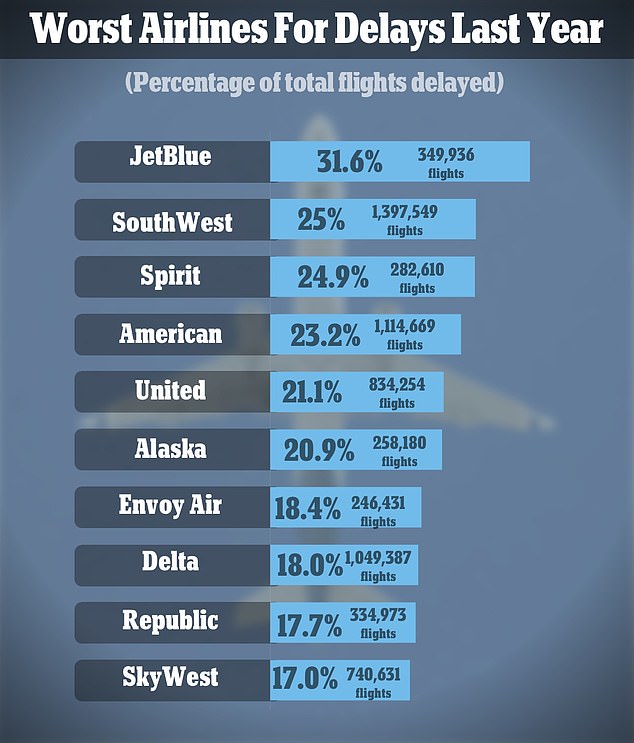
FlightAware data shows that JetBlue Airways is responsible for the most flight delays
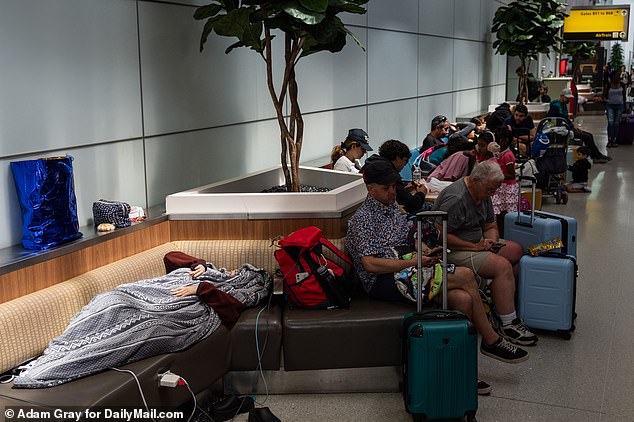
Delayed passengers at Newark Airport during the 4th of July holiday weekend
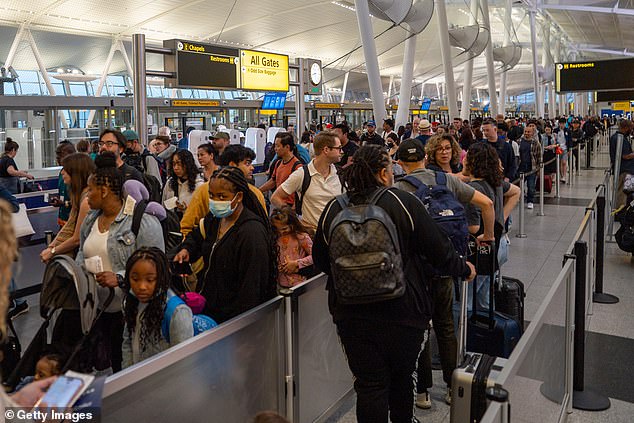
On June 30, record numbers of people passed through airport security
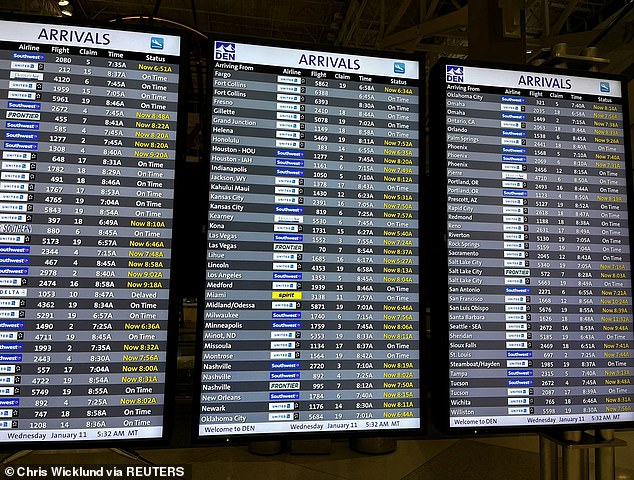
In January, an FAA system glitch grounded thousands of flights
Citing ATC staffing issues, the FAA in August extended through Oct. 28 temporary cuts to minimum flight requirements at busy airports in the New York City area and Washington National Airport.
A government watchdog said in June that critical ATC facilities are facing significant staffing challenges, posing risks to air traffic operations.
The FAA has 10,700 certified air traffic controllers, up slightly from 10,578 in 2022, much the same as in 2021 and down 10 percent from 2012. Of the FAA’s 13,300 air traffic controllers, 26 percent are trainees. At various facilities, inspectors are required to work overtime and six-day work weeks to cover shortages.
Last summer, there were 41,498 flights from New York airports where ATC personnel were a contributing factor in the delays. New York Terminal Radar Approach Control staffing levels were at 54 percent, the report said.
